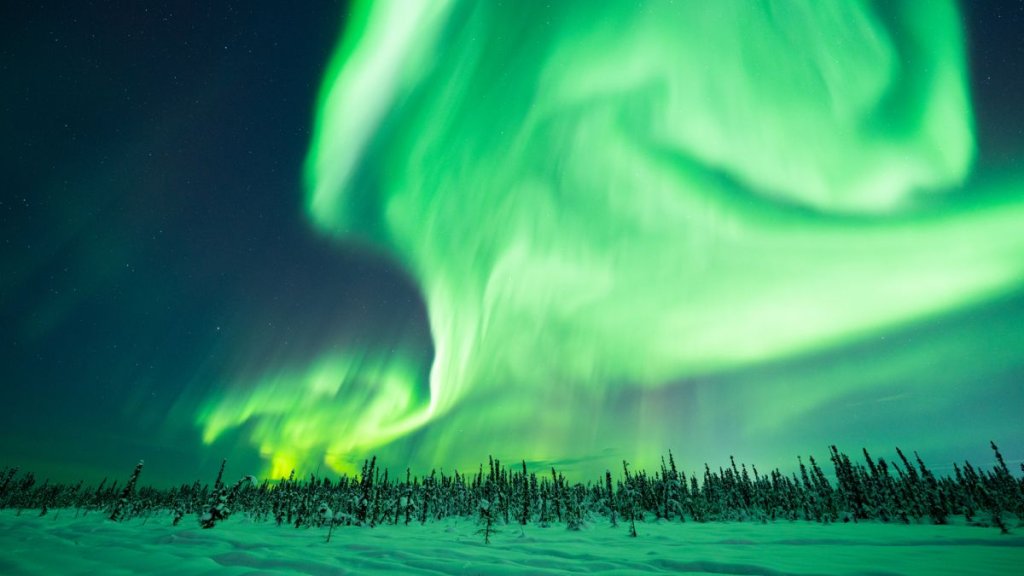
Powerful sun storm could supercharge auroras this week (Image Credit: Space.com)
A solar outburst over the weekend could lead to some stellar skywatching in the coming days.
On Sunday (May 7) at 6:54 p.m. EDT (2254 GMT), the sun emitted a long-duration M1.5-class solar flare — a medium-intensity event — directly at Earth. The high levels of radiation associated with this event have already caused minor shortwave radio blackouts on Earth, according to Spaceweather.com (opens in new tab).
The solar flare was also associated with a coronal mass ejection (CME), an eruption of solar plasma that’s now barreling toward our planet. The CME is expected to hit Earth early Wednesday morning (May 10), potentially sparking moderate to strong geomagnetic activity when it does so, Spaceweather.com wrote.
Related: Wild solar weather is causing satellites to plummet from orbit. It’s only going to get worse.
That activity may include supercharged aurora displays. For example, moderate geomagnetic storms can make auroras visible as far south as New York or Idaho, and strong ones can bring them into view for folks all the way down in Illinois or Oregon.
Do note, however, that space weather, like Earth weather, is a fickle thing, and forecasts can change at any moment.
Solar flares are bright bursts of electromagnetic radiation emitted from sunspots, while CMEs are expulsions of plasma and magnetized particles from the sun that travel more slowly through space. Solar flares that hit Earth can cause communications blackouts, whereas CMEs are associated with the aurora. Though they don’t necessarily occur simultaneously, the brightest solar flares do often coincide with CMEs.
As we move toward solar maximum, or the period of greatest solar activity, in the next year or two, we can expect more frequent and greater solar storms. As a result, we should see some spectacular auroral displays, too.
Indeed, the incoming solar storm is the latest in a series of space weather events to buffet the Earth. On Sunday, for example, a similar solar weather event boosted auroral displays for skywatchers around the planet.
Follow Stefanie Waldek on Twitter @StefanieWaldek (opens in new tab). Follow us on Twitter @Spacedotcom (opens in new tab) and on Facebook (opens in new tab).





